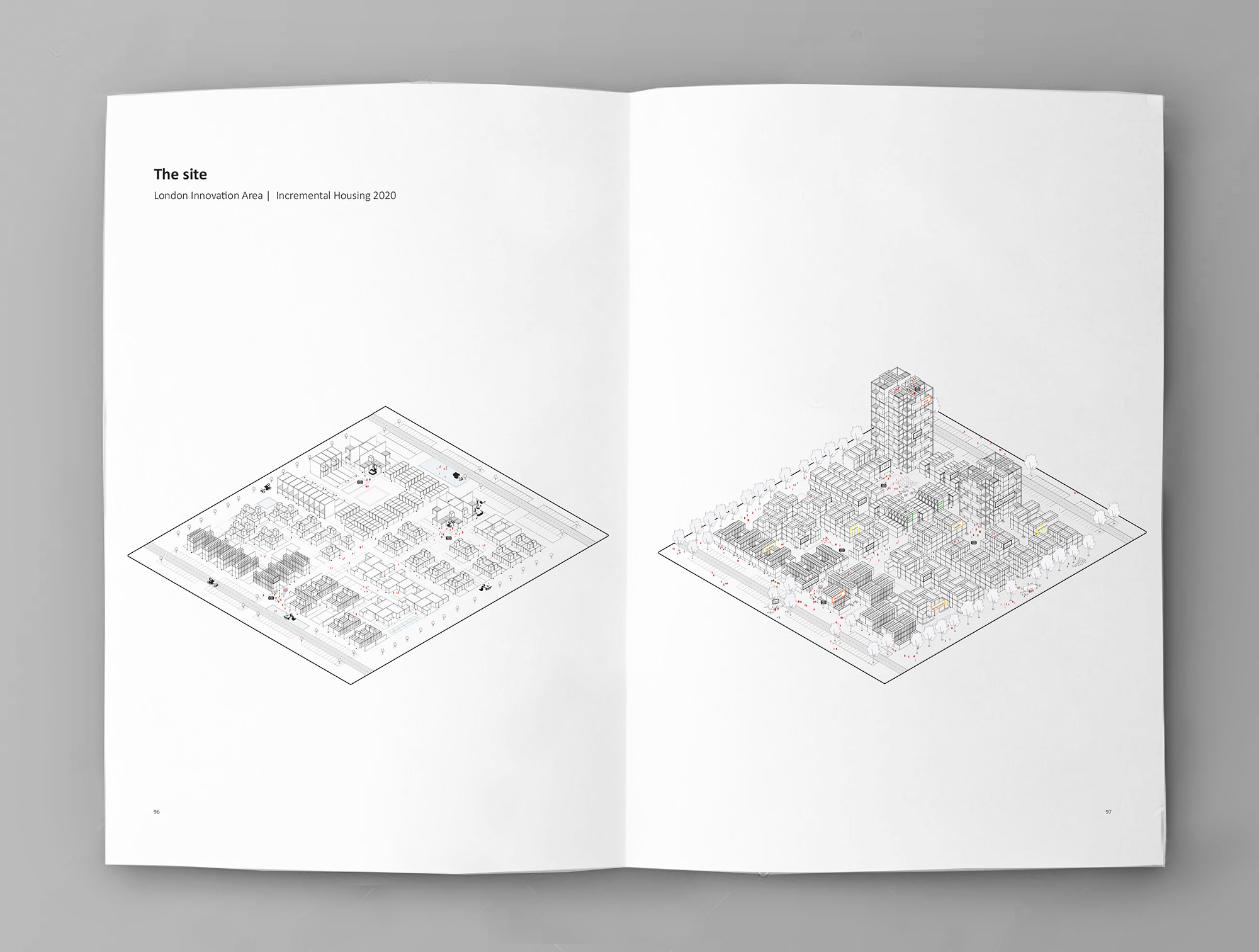Incremental Housing
Previ Project, Lima 1964













The research project Incremental Housing looks into the design principles of owner
occupied, low-rise and high density incremental housing through an analysis of
the international design competition PREVI (Proyecto Experimental de Vivienda) developed between 1964-1967 in Lima, Peru. The aim of the research is to study the design principles and mechanisms of large scale settlements developed by the United Nations in the seventies. What are the social, spatial and economic
possibilities, implications and mechanisms embedded
within the design of incremental housing?
Incremental housing provides a framework for the extension of the dwelling focusing on the transformation and growth of the family. However, as an economic strategy it minimizes state involvement and standardises urban development by the use of mortgage contracts. While incremental housing is used as a strategy to ensure the security of property it is maximising land use and ensuring the production of fictitious capital. Large scale housing projects such as Previ were enforcing the exploitation of both productive and domestic labour. Even though incremental housing became highly criticised, it is still implemented by the United Nations today and standardising land distribution all over the world.
Research and design project
02.2018-05.2019
Taught MPhil Projective Cities
Architectural Association School of Architecture
Incremental housing provides a framework for the extension of the dwelling focusing on the transformation and growth of the family. However, as an economic strategy it minimizes state involvement and standardises urban development by the use of mortgage contracts. While incremental housing is used as a strategy to ensure the security of property it is maximising land use and ensuring the production of fictitious capital. Large scale housing projects such as Previ were enforcing the exploitation of both productive and domestic labour. Even though incremental housing became highly criticised, it is still implemented by the United Nations today and standardising land distribution all over the world.
Research and design project
02.2018-05.2019
Taught MPhil Projective Cities
Architectural Association School of Architecture